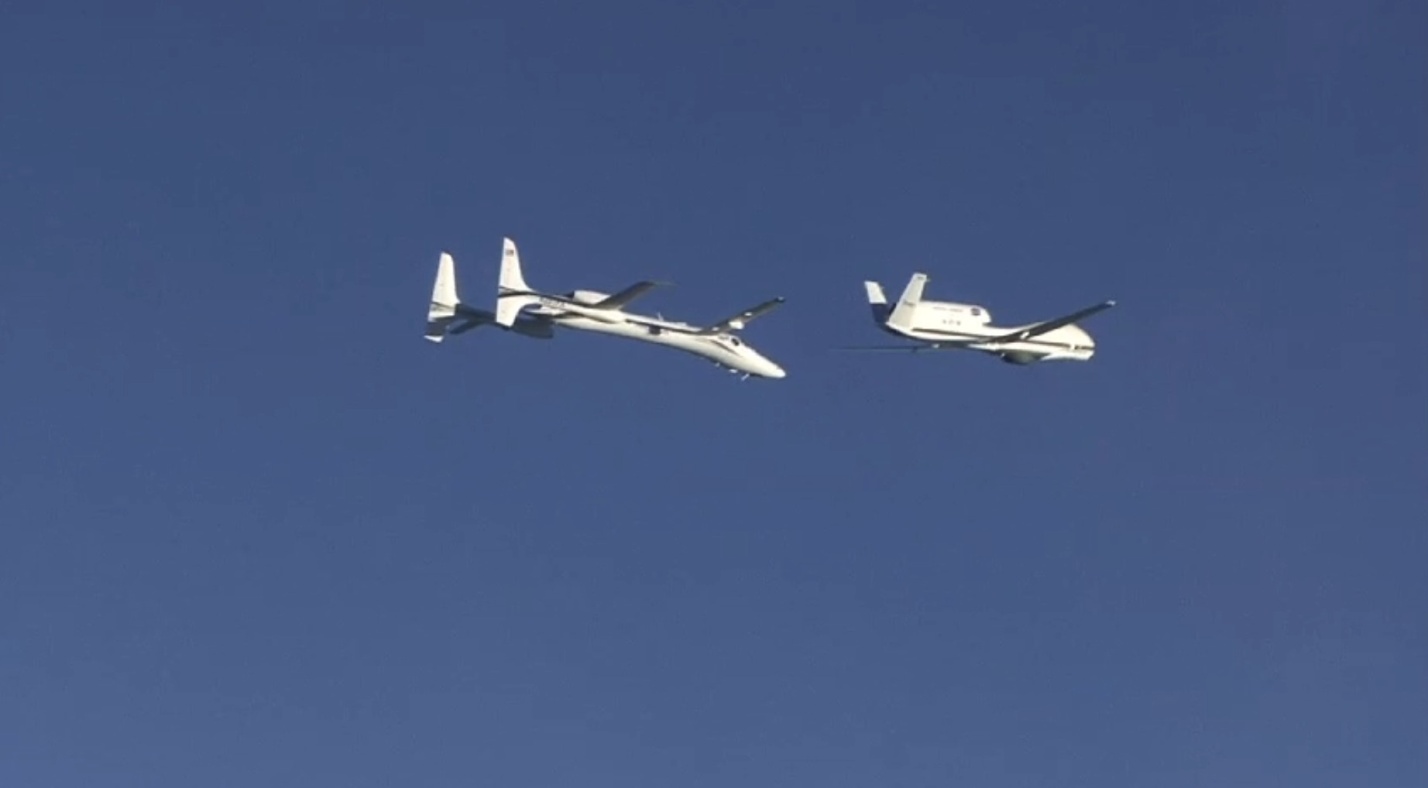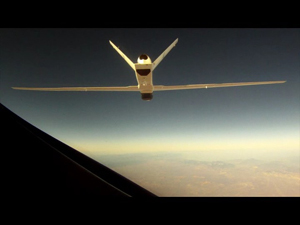NASA's Robot Airplane Practices for In-flight Refueling

Aerial refueling could keep drones such as the NASA's Global Hawk airborne for up to a week. Now two drones have taken a record-setting step toward that future by flying as close as 40 feet apart during a test on Jan. 21.
A Northrop Grumman Proteus test aircraft and a NASA Global Hawk engaged in their aerial courtship at a nose-bleeding altitude of 45,000 feet. That test helped human engineers better understand and reduce the risks leading up to the first autonomous aerial refueling of two Global Hawks in the spring of 2012.

Such aerial refueling can prove tricky for either manned or unmanned aircraft at high altitudes. That's why DARPA, the Pentagon's agency for defense innovations, teamed up with Northrop Grumman Corporation and NASA Dryden Flight Research Center on a $33 million KQ-X program to demonstrate autonomous aerial refueling. [7 Unmanned Airborne Warriors]
"When you add autonomous flight of both aircraft into the mix, as we will do later in the KQ-X program, you gain a capability that has mission applications far beyond just aerial refueling," said Geoffrey Sommer, KQ-X program manager at Northrop Grumman Aerospace Systems sector.
A previous DARPA effort used an F-18 fighter jet as a stand-in for a drone during a test of autonomously refueling from a 707 tanker aircraft.
The latest flight test with the actual drones checked out how well the unmanned aircraft flew with the wake turbulence. The drones also engaged in simulated breakaway maneuvers for when the refueling deed was done, so that they can get on with their stealthy surveillance activities.
This story was provided by InnovationNewsDaily, a sister site of SPACE.com.
Get the Space.com Newsletter
Breaking space news, the latest updates on rocket launches, skywatching events and more!
Join our Space Forums to keep talking space on the latest missions, night sky and more! And if you have a news tip, correction or comment, let us know at: community@space.com.

Space.com is the premier source of space exploration, innovation and astronomy news, chronicling (and celebrating) humanity's ongoing expansion across the final frontier. Originally founded in 1999, Space.com is, and always has been, the passion of writers and editors who are space fans and also trained journalists. Our current news team consists of Editor-in-Chief Tariq Malik; Editor Hanneke Weitering, Senior Space Writer Mike Wall; Senior Writer Meghan Bartels; Senior Writer Chelsea Gohd, Senior Writer Tereza Pultarova and Staff Writer Alexander Cox, focusing on e-commerce. Senior Producer Steve Spaleta oversees our space videos, with Diana Whitcroft as our Social Media Editor.










